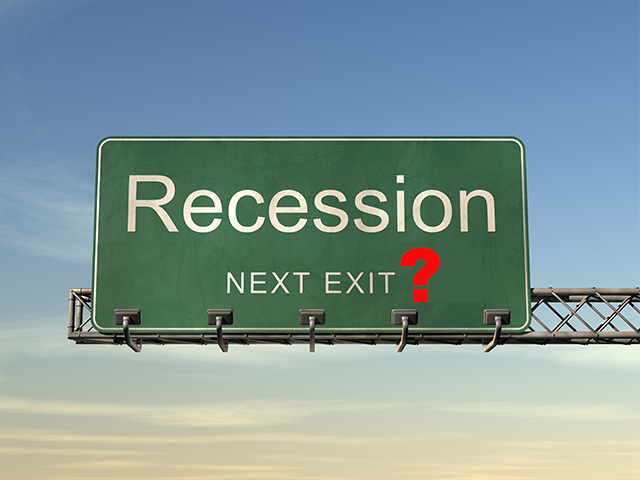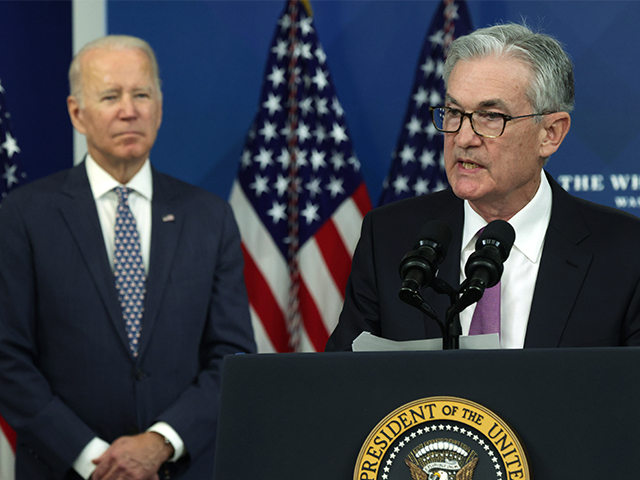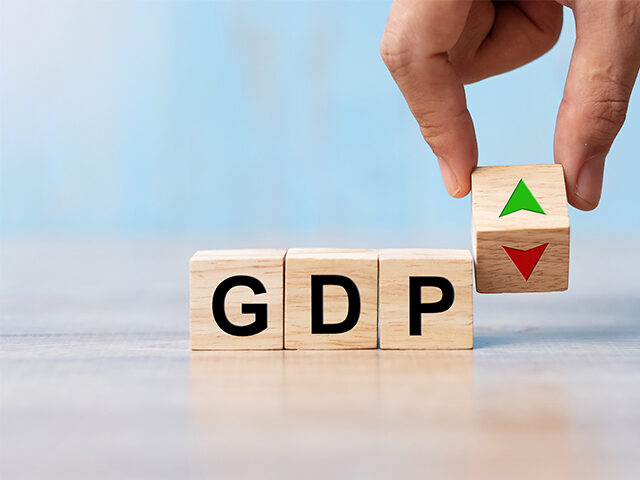Third GDP Revision Was a Body Blow to Recessionistas
The economy has been growing much faster than official statistics were indicating, largely due to more spending on domestic services. And that means inflation may also be more persistent than expected.
The Bureau of Economic Analysis released its third estimate of first-quarter gross domestic product (GDP) growth on Thursday—and it was a big one. GDP growth was revised up by seven-tenths of a percentage point to two percent. This provides powerful support to our view that the economy is unlikely to enter a recession this year.
We expect that many analysts who have clung to the view that we will fall into a recession this year will push this into a call for a downturn next year.
The Q1 Growth Story So Far
The first estimate had the economy growth at an anemic 1.1 percent annual rate, suggesting that any further slowdown could put the economy into a recession. The median projection of Federal Reserve officials at the March meeting was for a full-year growth rate of just 0.4 percent, implying that the Fed was expecting a couple of quarters of negative growth.
Nominal growth was seen as coming in at 5.1 percent. Real consumption growth was estimated at 3.7 percent. Consumer spending on goods was seen as rising at a 6.5 percent rate, with durables up 16.4 percent and nondurables up 0.9 percent. Services growth came in at 2.3 percent.

(iStock/Getty Images; BNN)
The second estimate showed a bit more vigor, raising the real growth to a 1.3 percent rate and nominal growth to 5.4 percent. Goods consumption was revised down a bit, but services revised up, confirming observations that consumers were rotating out of spending on goods into services.
With this data in hand, the estimates of Fed officials for full-year growth were dragged up to one percent at the June meeting. This suggested that while the Fed still saw sluggishness in the year ahead, it no longer expected an outright contraction.
Underestimating the Strength of the Consumer
Economists had penciled in a tick up to 1.4 percent in the third estimate, largely due to upward revisions in construction spending and annual adjustments to trade data that cut the trade deficit. The estimate of consumer spending growth was expected to be revised down a bit.
It turns out consumer spending was much stronger than thought. Personal consumption expenditures rose at a 4.2 percent rate, a full half a point stronger than the first estimate and four-tenths stronger than the second estimate. Interestingly, goods spending was weaker than thought, with the estimated growth coming down to just six percent. But services spending was revised up to a 3.2 percent growth rate, almost a full percentage point higher than the initial read.
Real final sales to domestic purchasers, a key measure of consumer strength, was revised up from a growth rate of 3.2 percent in the first estimate to 3.3 percent in the second estimate. The latest has this growing at a 3.5 percent rate. Real final sales of domestic product is now estimated at a 4.2 percent growth rate, a big upward revision from the prior two estimates of 3.4 percent.
Nominal growth, a key indicator of corporate revenues and a big driver of business spending, was revised up to 6.1 percent. Nominal final sales of domestic product now is estimated to have grown at an 8.6 percent rate, up from the first estimate of 7.6 percent and the second estimate of 7.8 percent. Final sales to domestic purchasers rose at a 7.5 percent rate, up from the first estimate of 7.1 percent and the second estimate of 7.4 percent.
The drag from housing was also smaller than thought. The initial estimate was that residential investment fell at a 4.2 percent rate. This was revised to a decline of 5.4 percent in the second estimate. The third reading has housing down to a four percent contraction. This supports our view that housing bottomed in the first quarter of the year at a higher level than thought and is likely on its way to recovery.

(iStock/Getty Images)
There was even a bit of good news on the inflation front. The personal consumption price index was revised down from 4.2 percent in the previous two estimates to 4.1 percent. The measure of core prices was revised down to 4.9 percent from the second estimate of five percent.
The story of business inventories has been wild. After the explosive growth of $137 billion at the end of last year—which appeared to be largely an accident of businesses over-estimating the strength of the year-end holiday shopping season—this was sure to be a drag on first-quarter growth. In the first estimate, inventories were thought to have fallen by $1.6 billion. The second estimate had them growing by $6.9 billion. The third estimate nearly splits the difference, with growth of $3.5 billion. Despite the revision into positive territory, inventories shaved 2.14 percentage points off of growth for the first quarter.
That’s likely to reverse in the second quarter. Major retailers like Target and Walmart have said their inventory reductions are done. With consumer spending and jobs still coming in strong, it’s likely that inventories will make a positive contribution to GDP in the second quarter.
Inflation Threat from Services Spending
The revisions did present a reason to be concerned about the persistence of inflation. As noted above, the rotation out of goods and into services was even stronger than expected in the first quarter. Unless the labor market significantly weakens, this is likely to continue to gain steam as the year goes on.
The trouble arises from the fact that the supply of services is largely constrained by the supply of labor. When spending was heavily concentrated on goods, some of the inflationary pressures created by higher demand leaked out to foreign producers. As spending on services increases, there’s less leakage because the vast majority of services are domestically produced. So, the rotation will add to wage and price pressures in services.

Federal Reserve Board Chair Jerome Powell speaks as President Joe Biden during a press conference on November 22, 2021, in Washington, DC. (Alex Wong/Getty Images)
As Fed Chair Jerome Powell’s remarks this week have made clear, the Federal Reserve is still very concerned about inflation in the services side of the economy. The shift in consumption and what it implies for inflation may put pressure on the Fed to continue hiking beyond the two increases everyone has penciled in for this year.
Which raises unavoidable political questions. Will the Fed keep hiking in an election year? Is Powell willing to throw the economy into a recession as Americans prepare to decide who will occupy the White House in 2025?

COMMENTS
Please let us know if you're having issues with commenting.